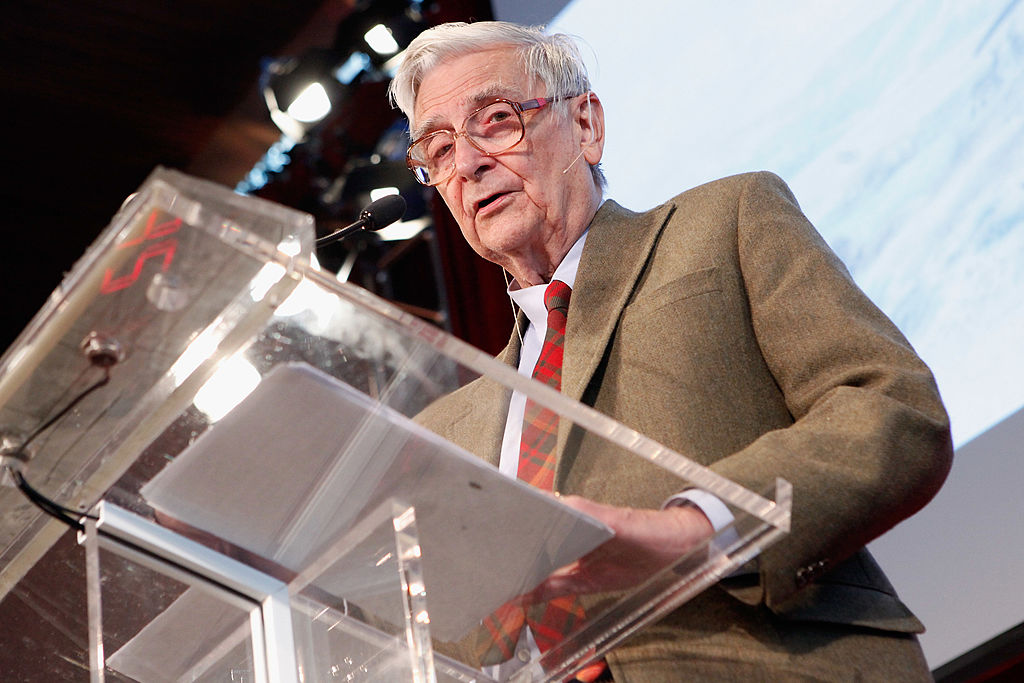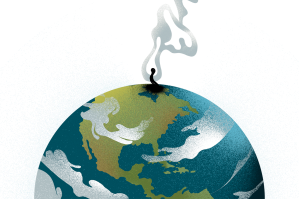Famed ant specialist and sociobiologist E.O. Wilson passed away on December 26, age ninety-two. He came to national attention in 1975 with the publication Sociobiology: The New Synthesis, which is one of those books that steamrolled into public consciousness. It may not have been as revolutionary as Darwin’s On the Origin of Species by Means of Natural Selection, but not for want of trying. Wilson had something new to say about how evolution works and it provoked responses every bit as harsh as those Darwin encountered a century earlier. He was especially reviled by his Harvard colleague Richard Lewontin, one of the founders of molecular evolutionary theory, who saw no validity at all in Wilson’s interpretation of social structures as embodying evolutionary strategies.
Along with other prominent figures such as Stephen Jay Gould, Lewontin devoted a seemingly endless series of published lectures drawing opprobrium on Wilson. Behind this lay Lewontin’s thinly veiled Marxism that pictured humans as free from the trammels of biology to invent society according to their dreams, rather than being cornered by their genes. The attacks on Wilson, broadening into a comprehensive attack on sociobiology also stirred up a wing of advanced feminism, which was ardent in its disgust with the idea that innate sexual differences could have anything to do with the ordering of human society.
Wilson held his own in these debates eventually publishing a memoir, Naturalist (1994) in which he shrugged off his critics as people who had let their politics and ideology get the better of their science. He complained that early on he received only tepid support from colleagues who knew better. “Mostly what I got was silence, even when the internal Harvard dispute became national news.” Perhaps silence was better than the famous incident at a 1978 meeting of the American Association for the Advancement of Science when a member of the Progressive Labor Party poured a pitcher of water on his head. Wilson was surprised and shocked by the intensity of the Marxist attacks. He wrote that his “anger replaced anxiety” and he devoted himself to studying his new enemies.
The result of that was his Pulitzer Prize-winning 1979 book, On Human Nature, in which he moved from ants (and other social species) directly into the question of how humans are subject to the dictates of biology. In Wilson’s view, “society is nothing but the manifestation of the properties of individual human being.” This “reductionism” — Wilson owned the term that Lewontin shot at him — poses some problems even for those of us who have no attraction to Marxism.
For example, it leaves either no room or very little for those forms of social order over which the individual human being has little say. We don’t invent the languages we speak, the customs we obey, or the laws we follow, except to a very limited degree. We exist within communities of shared belief, kinship and tribe that are a lot more than “the manifestation of the properties” of individuals. Of course, I have met sociobiologists and libertarians who talk themselves into the conviction that we are, when all is said and done, just ants following wherever our pheromones lead.
E.O. Wilson, as it happens was one of the founding members of the organization over which I now preside, the National Association of Scholars. He served on its board of advisors starting in 1987 and gave a keynote speech in 1994 at one of NAS’s early national conferences. But I crossed paths with him only once, and it was not a happy occasion. I’ll tell it my own way.
In spring 2008, a faculty member at the University of Delaware alerted me that the university office of residence life has imposed a peculiar dorm-based form of ideological indoctrination on students. It involved all sorts of arm-twisting to get students to vocally support various racial claims, gay marriage and socialist goals. At first the university denied it was doing any such thing, but we had documents as well as witnesses, and the administration eventually climbed down. Those documents, however, looked even more peculiar when we started reading them more carefully. What jumped out was that the whole indoctrination program was presented as a “sustainability” initiative.
Thus began what became a seven-year project by NAS to track down exactly what this meant, culminating in 2015 study we titled Sustainability: Higher Education’s New Fundamentalism. What did and what does “sustainability” mean? The answers aren’t so simple, though one place to begin is with a 1987 United Nations report Our Common Future, better known as the Brundtland Commission report. It defined sustainability as “Development that meets the needs of the present without compromising the ability if future generations to meet their own needs.” That sounds nice, but if you stop to think about it, how are we supposed to know what future generations will need? Could generations past have predicted the need for coal, oil, uranium or rare earths? Plainly we can predict some future needs. People will need breathable air and drinkable water, and we best not use these all up. But the concept of sustainability, launched in that UN report, still has something fishy about it.
Part of what is fishy is that its proponents were in a hurry to take a concept about “development” and the “environment” and move it quickly into seemingly unrelated areas. “Sustainability,” according to the mandarins at the University of Delaware in 2008, was only one-third about the environment. Another third was about “economic fairness” and the last third was about “social justice.” In short, sustainability was a master concept that wrapped together a whole new Marxist utopian view of society.
By 2008, that included the idea that planet Earth was in the midst of manmade catastrophic global warming. But don’t lose track of the chronology. The sustainability movement was launched in 1987, a year before NASA scientist James Hansen lit the fire that became global warming hysteria. The two movements, however, quickly found one another and became the great quasi-religious pantheist dogma of our age.
I did my best for a decade to steer clear of “global warming” theory as a topic that would do the NAS no good. Clearly a lot of academics, including NAS members were enthusiastic votaries at that shrine. Apocalyptic thinking had secured a profoundly emotional hold on the modern mind. But the more I read, the more “climate deniers” I encountered and found to be level-headed folks, and the more preposterous became the pronouncements of the Carbon Doom Cult, the more difficult I found it to dodge the topic. A strange pseudo-science whose devotees insisted that they were upholding “true science” against a rabble of fossil fools were in ascendency.
And so I began to steer NAS into the dangerous waters of skepticism, not just towards “sustainability” but towards the whole idea that carbon dioxide, the gas that make up four one-hundredths of one percent of Earth’s atmosphere, was melting the glaciers, thawing the Arctic, whipping up hurricanes, drowning coastlines and turning croplands into deserts. Now we learn that the Arctic was being warmed by the Atlantic long before Exxon and Mobil started business; Greenland’s glaciers are growing; and increases in CO2 are so marginal as to mean nothing.
Not that I expect mere facts to arrest anyone’s enthusiasm for an exciting theory. We have too much invested in dismantling a modern energy-intensive economy to stop now. No matter that wind and solar are technological busts.
One of the early gurus of the ecology movement was Barry Commoner who way back in 1971 laid out his Four Laws of Ecology, including the first law, “Everything is connected to everything else.” It would be hard to find another platitude that has caused so much trouble. For sure, with an infinity of degrees, my shoelaces are somehow connected to the Great Wall of China, but it is not a connection that need detain us. Everything-is-connected is really a postulate of New Age religion and it is an invitation to descend into irrationality. Thus it follows that if we can’t prove a connection between the internal combustion engine and a tornado in Kentucky, we can just assume one. That’s what global warmists call “the precautionary principle.”
Sometime in the summer of 2015 I picked up the phone and called my NAS advisory board member E.O. Wilson to tell him where I was headed on this topic. He was appalled. In his view global warming was real, catastrophic and putting the whole web of life on our fragile planet at risk. After twenty-eight years on the NAS board, he abruptly resigned and so ended my call.
Of course, I knew he had often expressed his deep concern for the extinction of species and the loss of diversity in the plant and animal kingdoms, but I also knew him as someone who had a steely commitment to rigorous scientific inquiry and contempt for science that embroiled itself with political and ideological causes. It was arresting to see how he had settled down into an Al Gore conception of our blue speck in the vast universe.
Whether sociobiology is a signal contribution to human understanding of the living world and will prove sustainable to meet the intellectual needs of “future generations,” I have no clear idea. It is a model that works well with ants, and that’s something. To what degree are we like ants? I’d say not very much, but we do have an enormous capacity to fall in line, which is good myrmicine behavior. If conformity is our central characteristic, then yes, we are ants. But I think we can do better.

























